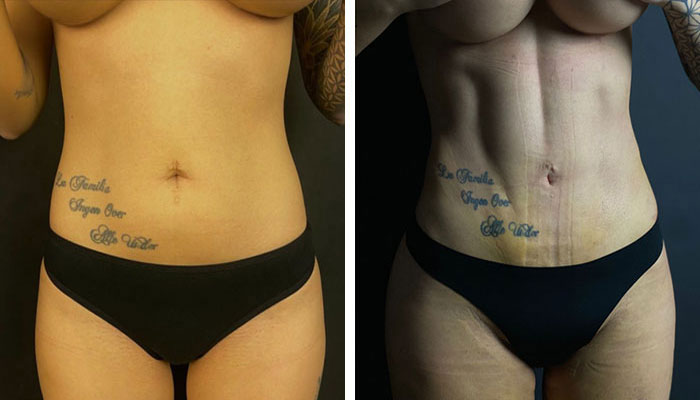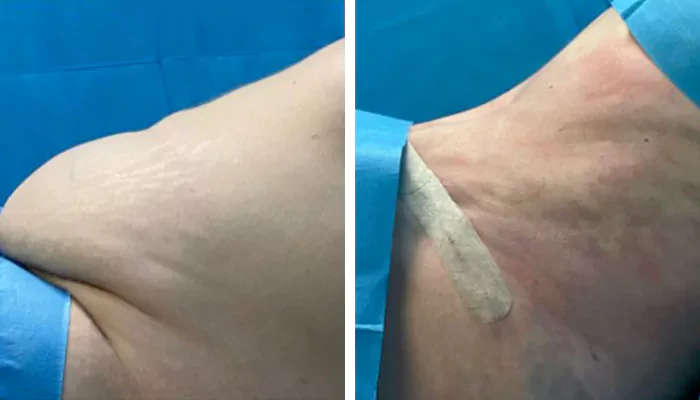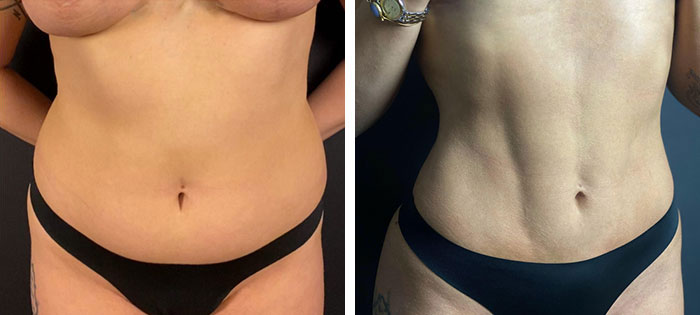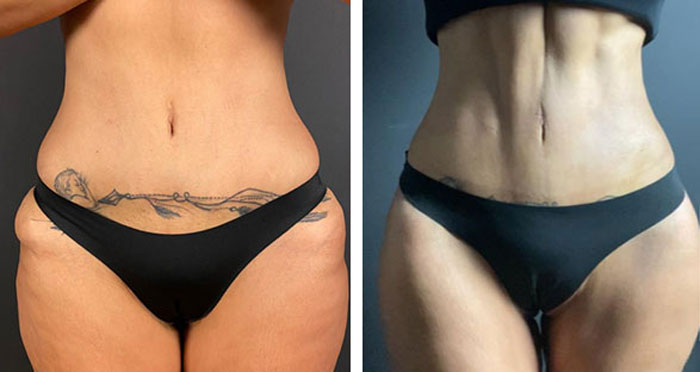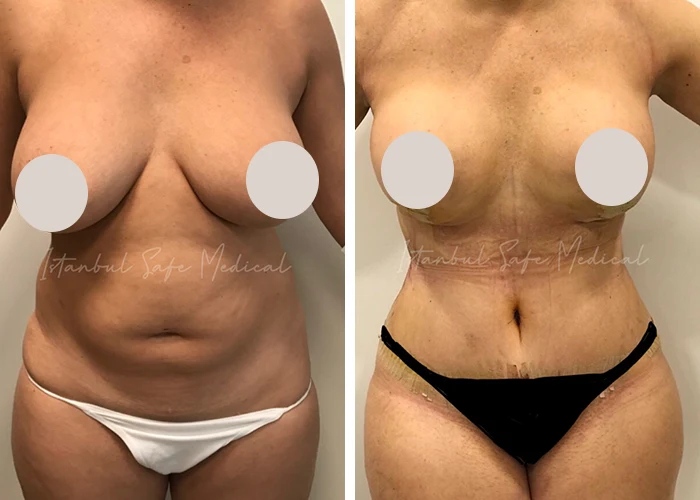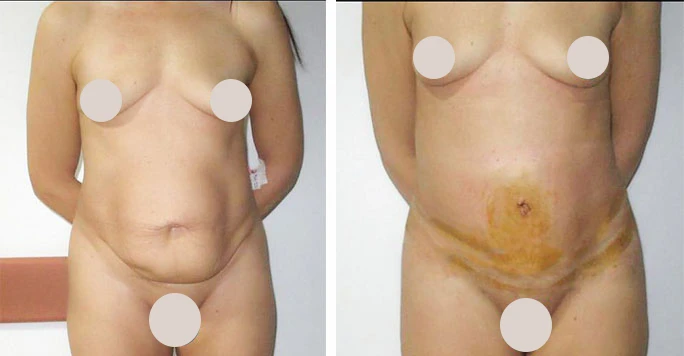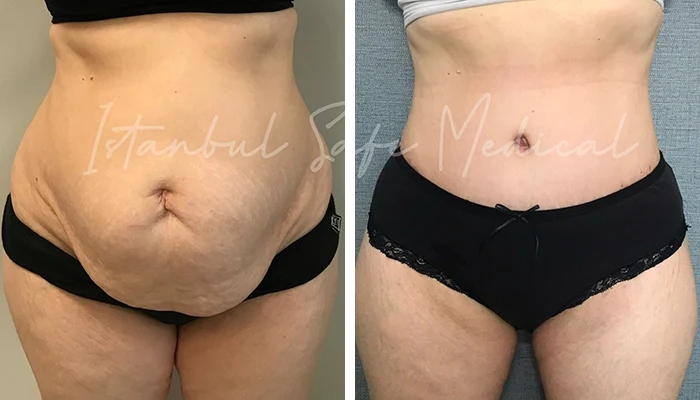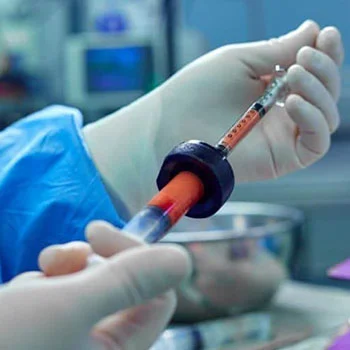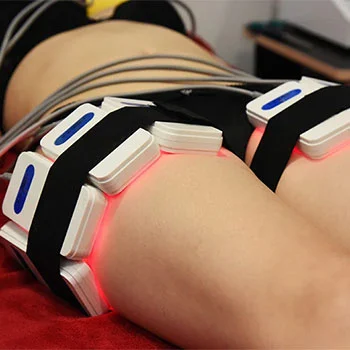What is abdominal etching?
Abdominal etching (ab etching), also known by many other names such as six-pack liposculpture, six-pack liposuction, six-pack surgery, lipoetching, high-definition liposuction, and abdominal sculpting, is a cosmetic surgery procedure that involves the removal of excess fat and the sculpting of the abdominal muscles to create a more defined and toned appearance. The surgeon will use liposuction techniques to selectively remove fat around the abdominal muscles to enhance the visibility of the natural muscle contours, creating the appearance of a "six-pack" or toned abdomen. This procedure is typically sought after by individuals who are already relatively fit but struggle to achieve the desired definition in their abdominal area
Why do people get abdominal etching?
People choose to undergo abdominal etching for various reasons, including:
- Enhanced muscle definition: Abdominal etching helps to create a more defined and sculpted appearance of the abdominal muscles, particularly the rectus abdominis muscles (commonly referred to as the "six-pack").
- Stubborn fat removal: Even with diet and exercise, some individuals may struggle to eliminate stubborn fat deposits in the abdominal region. Abdominal etching can target and remove these localized fat pockets.
- Improved confidence: By achieving a more toned and defined abdominal area, individuals may experience a boost in self-confidence and body image.
- Athletic enhancement: Athletes or fitness enthusiasts may opt for abdominal etching to enhance their muscle definition and overall physique, especially for competitions or aesthetic purposes.
- Body contouring: Abdominal etching is a form of body contouring that can help individuals achieve their desired body shape and silhouette.
It is important for individuals considering abdominal etching to have realistic expectations about the outcomes of the procedure and to maintain a healthy lifestyle to sustain the results over time. Consulting with a qualified plastic surgeon is crucial to determine if abdominal etching is the right option based on individual goals and medical considerations.
Is ab etching right for me?
Determining whether abdominal etching is right for you depends on various factors, including your overall health, aesthetic goals, and expectations. Here are some considerations to help you decide:
- Good health: You should be in good overall health with no underlying medical conditions that may increase the risks associated with surgery.
- Body weight: Abdominal etching is best suited for individuals who are already at or near their ideal body weight but struggle with localized fat deposits in the abdominal area.
- Muscle tone: Having some muscle definition in the abdominal area is important for the best results. Abdominal etching is not a substitute for weight loss or muscle building.
- Realistic expectations: It is essential to have realistic expectations about the outcomes of the procedure. Abdominal etching can enhance muscle definition, but it may not provide the same results as natural muscle development through exercise.
Ultimately, the decision to undergo abdominal etching should be based on a thorough evaluation of your health, goals, and expectations. It is important to have a detailed discussion with a qualified plastic surgeon to determine if abdominal etching aligns with your needs and desired outcomes.
How to prepare
Preparing for abdominal etching involves several key steps to ensure a successful procedure and optimal recovery:
- Consultation: Schedule a consultation with a board-certified plastic surgeon who specializes in liposuction in general and abdominal etching in particular. During the consultation, discuss your goals, medical history, expectations, and any concerns you may have.
- Medical evaluation: Your surgeon will conduct a physical examination and review your medical history to determine if you are a suitable candidate for abdominal etching. Follow any pre-operative instructions provided by your surgeon.
- Quit smoking: If you smoke, it is recommended to quit smoking several weeks before the procedure as smoking can impair healing and increase the risk of complications.
- Medication review: Inform your surgeon about any medications, supplements, or vitamins you are currently taking. Your surgeon may advise you to adjust or discontinue certain medications before the procedure.
- Healthy lifestyle: Maintain a healthy lifestyle leading up to the surgery by eating a balanced diet, staying hydrated, exercising regularly, and getting adequate rest. This can help support your overall health and facilitate a smoother recovery.
- Arrange for assistance: Plan for someone to drive you to and from the surgical facility on the day of the procedure and to assist you during the initial stages of recovery, as you may experience some limitations in movement.
- Follow pre-operative guidelines: Your surgeon will provide specific pre-operative instructions, which may include fasting before surgery, avoiding certain medications like blood thinners, and showering with a special antibacterial soap before the procedure.
- Prepare your recovery space: Set up a comfortable recovery space at home with necessary supplies such as loose and comfortable clothing, extra pillows for support, prescribed medications, and any post-operative care instructions provided by your surgeon.
- Ask questions: Do not hesitate to ask your surgeon any questions or seek clarification on any aspect of the procedure, recovery process, expected outcomes, and potential risks or complications.
By following these preparation steps and closely adhering to your surgeon's recommendations, you can help ensure a safe and successful abdominal etching procedure and promote a smooth recovery process.
How is the procedure performed?
The abdominal etching procedure is typically performed in a surgical facility or hospital setting and involves the following steps:
- Anesthesia: Before the procedure begins, the surgeon will administer anesthesia to ensure your comfort throughout the surgery. This may involve general anesthesia or intravenous sedation, depending on the extent of the surgery and your surgeon's recommendation.
- Incision placement: Small incisions, usually less than half an inch in length, are made in inconspicuous areas near the treatment area. These incisions allow the insertion of a thin tube called a cannula, which is used to suction out the fat.
- Tumescent technique: Before fat removal, a tumescent solution containing saline, epinephrine (to reduce bleeding), and a local anesthetic is injected into the treatment area. This solution helps numb the area, shrink blood vessels, and facilitate fat removal.
- Liposuction: Using a thin tube called a cannula, the surgeon will perform liposuction to remove excess fat from the abdominal area. The surgeon will carefully sculpt and contour the abdominal muscles to enhance the appearance of a toned and defined abdomen.
- Muscle definition: Specialized techniques are used to selectively remove fat around the abdominal muscles, emphasizing the natural contours of the muscles, particularly the rectus abdominis muscles (six-pack muscles).
- Skin closure: Once the desired sculpting and contouring are achieved, the incisions are carefully closed with dissolvable sutures, and a compression garment may be placed over the treated area to support healing and reduce swelling.
- Monitoring: After the procedure is completed, you will be monitored in a recovery area before being discharged home. Your surgeon will provide specific post-operative instructions regarding wound care, activity restrictions, pain management, and follow-up appointments.
Abdominal etching is typically performed as an outpatient procedure, meaning that patients can go home the same day after the surgery. It is essential to follow your surgeon's post-operative care instructions diligently to promote proper healing and achieve the best possible results.
Abdominal etching recovery and aftercare
Recovery and aftercare following abdominal etching are crucial for optimal results and a smooth healing process. Here are some general guidelines for recovery and aftercare:
- Swelling and bruising: Swelling and bruising are common after abdominal etching. Elevating your upper body and applying cold compresses can help reduce swelling and discomfort. Be patient, as swelling typically subsides gradually over several weeks.
- Compression garment: Your surgeon may recommend wearing a compression garment to minimize swelling, support the treated area, and help contour the abdominal region. Follow your surgeon's instructions on how long to wear the garment.
- Physical activity: Avoid strenuous activities, heavy lifting, and intense exercise for several weeks following the procedure. Your surgeon will provide guidance on when it is safe to gradually resume normal activities.
- Medication: Take prescribed pain medications as directed by your surgeon to manage any discomfort during the initial recovery period. Avoid taking medications or supplements that may increase the risk of bleeding or interfere with healing.
- Wound care: Keep the incision sites clean and dry as instructed by your surgeon. Follow any specific wound care guidelines provided, such as how to change dressings or shower safely.
- Diet and hydration: Maintain a healthy, balanced diet to support the healing process and stay hydrated. Avoid excessive salt intake, as it can contribute to swelling.
- Sun protection: Protect your incision sites from sun exposure by wearing sunscreen or clothing that covers the treated area. Sun exposure can lead to pigmentation changes in the healing skin.
- Patience and rest: Allow your body time to heal and recover. Get plenty of rest and listen to your body's signals. Avoid activities that strain the abdominal muscles during the initial recovery phase.
- Follow-up appointments: Attend all scheduled follow-up appointments with your surgeon to monitor your healing progress, remove sutures if necessary, and address any concerns or questions you may have.
- Contact your surgeon: If you experience severe pain, unusual swelling, persistent redness, or any signs of infection at the incision sites, contact your surgeon immediately.
Following these recovery and aftercare guidelines can help promote a smooth healing process, reduce the risk of complications, and optimize your results following abdominal etching. Be sure to communicate with your surgeon if you have any questions or concerns during your recovery journey.
Ab etching risks and complications
Like any surgical procedure, abdominal etching carries certain risks and potential complications. It is essential to be aware of these risks before undergoing the procedure. Some of the risks associated with abdominal etching include:
- Infection: There is a risk of developing an infection at the incision sites following the procedure. Proper wound care and following your surgeon's post-operative instructions can help reduce this risk.
- Bleeding: Excessive bleeding during or after the procedure is a potential risk. Your surgeon will take precautions to minimize bleeding during the surgery.
- Fluid accumulation: Fluid buildup (seroma) or blood accumulation (hematoma) in the treated area can occur and may require drainage to prevent complications.
- Changes in sensation: Temporary or permanent changes in sensation, such as numbness or tingling, may occur around the incision sites or in the treated area. These changes usually improve over time but can be permanent in some cases.
- Scarring: While efforts are made to minimize scarring by placing incisions strategically, some scarring may still occur. Proper wound care and scar management techniques can help improve the appearance of scars over time.
- Asymmetry: There is a risk of asymmetry in the abdominal contours following the procedure. Your surgeon's skill and experience play a crucial role in achieving symmetrical results.
- Unsatisfactory results: Despite the surgeon's best efforts, the final results of abdominal etching may not meet your expectations. It is essential to have realistic expectations and communicate openly with your surgeon about your goals.
- Skin irregularities: Changes in skin texture, contour irregularities, or waviness in the treated area may occur, particularly if too much fat is removed or if the skin does not retract evenly.
- Allergic reactions: While rare, allergic reactions to anesthesia, surgical materials, or medications used during the procedure can occur.
- Deep vein thrombosis (DVT): Prolonged immobility after the procedure can increase the risk of developing blood clots in the legs (DVT). Moving and walking as directed by your surgeon can help prevent this complication.
It is essential to discuss these risks and potential complications with your surgeon during the consultation process. Choosing a board-certified plastic surgeon with experience in abdominal etching can help minimize these risks and optimize your chances of a successful outcome. Be sure to follow your surgeon's pre-operative and post-operative instructions carefully to reduce the likelihood of complications and promote a smooth recovery.
How much does an ab etching cost?
The cost of abdominal etching can vary depending on several factors, including the geographic location of the surgical facility, the experience and reputation of the plastic surgeon, the complexity of the procedure, the specific techniques used, and the extent of liposuction required. On average, the cost of abdominal etching in the United States ranges from $3,000 to $10,000 or more.It is important to note that the total cost of abdominal etching typically includes various components such as:
- Surgeon's fee: This fee covers the expertise and skills of the plastic surgeon performing the procedure.
- Anesthesia fee: The cost of administering anesthesia during the procedure.
- Facility fee: This fee includes the use of the surgical facility, equipment, and support staff.
- Pre-operative and post-operative care: Costs associated with pre-operative consultations, follow-up appointments, and post-operative care.
- Compression garments: Some surgeons may include the cost of post-operative compression garments in the overall price.
- Medications: Prescription medications provided for pain management and to prevent infection.
- Additional procedures: If additional procedures are combined with abdominal etching, such as liposuction in other areas, the overall cost may be higher.
Female ab etching
Women can have an ab etching similar to men. While the goal of abdominal etching is often associated with creating a more sculpted "six-pack" appearance in men, women may also seek ab etching to achieve a more toned and defined abdominal contour. Female abdominal etching aims to enhance the natural curves and muscle definition of the abdomen, tailored to the individual's aesthetic goals and desired results. Women can benefit from abdominal etching to enhance their abdominal contour, achieve a more defined silhouette, and improve self-confidence
The procedure for female abdominal etching is similar to that for men and involves liposuction techniques to selectively remove fat deposits around the abdominal muscles, emphasizing muscle definition and contouring. The surgeon uses specialized techniques to sculpt the abdomen, creating a more athletic and toned appearance.
It is important for both men and women considering abdominal etching to consult with a board-certified plastic surgeon specializing in body contouring procedures. During the consultation, the surgeon will assess the individual's anatomy, discuss their goals and expectations, and develop a personalized treatment plan to achieve the desired results.
FAQs
Are abdominal etching results permanent? How long do they last?
Abdominal etching results can be long-lasting if a stable weight is maintained. While fat cells removed during the procedure do not grow back, weight fluctuations can impact the results. With a healthy lifestyle, the results of abdominal etching can last for many years.
How long does an ab etching procedure take?
The duration of an abdominal etching procedure can vary depending on the extent of liposuction and sculpting required. On average, the procedure can take around 1 to 2 hours to complete, but this timeframe may vary based on individual factors and the surgeon's technique.
Will ab etching leave scars?
Abdominal etching typically involves making small, strategically placed incisions that result in minimal scarring. Skilled plastic surgeons aim to place incisions in discreet locations to minimize visible scarring. Over time, the scars tend to fade and become less noticeable.
Should I lose weight before abdominal etching surgery?
It is recommended to be at or near your target weight before undergoing abdominal etching surgery. While the procedure can remove localized fat deposits and enhance muscle definition, it is not a substitute for weight loss. Achieving a stable weight before surgery can optimize results.
What is the ideal weight for ab etching?
The ideal weight for abdominal etching varies for each individual and is not solely determined by a number on the scale. It is important to have a healthy body mass index (BMI) and be close to your target weight to maximize the results of abdominal etching.

